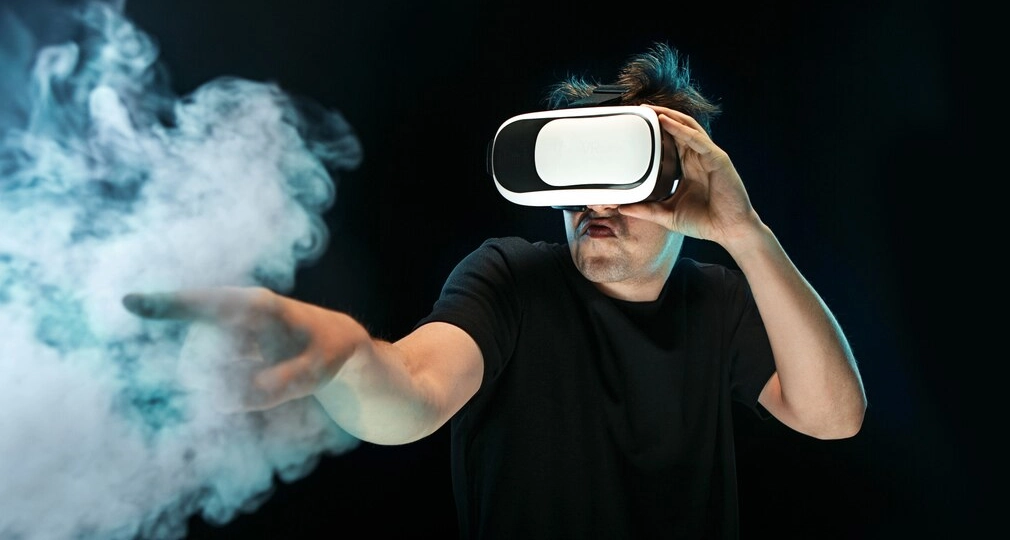Virtual reality is revolutionizing storytelling, offering an unprecedented level of engagement. As this technology advances, businesses must recognize its potential and integrate it into their marketing strategies. VR is no longer a futuristic concept—it’s a rapidly growing trend with significant implications for advertising.
The Current State of VR and AR Advertising
Despite its potential, VR and AR advertising are still in their infancy. While some innovative companies experiment with immersive campaigns, large-scale adoption remains limited due to one primary reason: consumer access to VR devices.
There is a fundamental distinction between VR/AR marketing (creating branded content) and VR/AR advertising (placing ads within existing VR experiences). Most efforts so far have focused on the former—brands producing high-budget immersive experiences to capture attention. However, as the industry matures, businesses will seek more cost-effective, scalable advertising solutions, such as in-game placements and interactive brand integrations.
When Will VR Advertising Become Mainstream?
For VR and AR advertising to reach mass adoption, two critical factors must align:
- Content with Practical Value:
Currently, VR is predominantly used for entertainment, which limits its long-term engagement. Until VR becomes useful in daily life—whether for work, education, or social interaction—its adoption will remain niche. - A Widely Adopted Consumer Device:
The industry is waiting for a game-changing brand to release a mass-market VR/AR device. While companies have attempted to popularize VR headsets, widespread adoption remains elusive. However, major players in tech are continuously working on next-generation AR/MR glasses, which could accelerate adoption and, in turn, revolutionize advertising opportunities.
Will Consumers Reject VR Ads Over Time?
History shows that advertising has always been constrained by the platform it exists on. Print, television, and online media have all evolved as brands fought for consumer attention, often leading to intrusive ad formats. However, VR and AR require a different approach.
Traditional advertising strategies—such as disruptive pop-ups—could backfire in VR, diminishing user experience and deterring adoption. Instead, brands must seamlessly integrate ads into virtual environments. The key to success lies in non-intrusive, narrative-driven advertising that enhances rather than disrupts the experience.
The Future of VR Advertising: A New Approach
To make VR advertising effective, companies must rethink their strategies. Rather than forcing ads into virtual spaces, advertisers should embed brands organically into the user’s journey. This can be achieved through:
- Native Product Placement: Brands can exist naturally within VR environments, such as virtual billboards, branded in-game assets, or interactive objects.
- Story-Driven Advertising: Instead of interrupting experiences, advertisements can become part of the storyline, making them feel like an essential element of the virtual world.
- User-Controlled Engagement: Giving users the option to interact with brands at their own pace ensures a positive experience and increases retention.
The Role of VR in the Gaming and Gambling Industry
One industry that stands to benefit significantly from VR and AR advertising is gaming, particularly within interactive gambling experiences. Unlike traditional digital ads, VR enables immersive branding that blends seamlessly into gameplay. This could take the form of:
- Virtual casino environments featuring branded elements.
- Interactive game-sponsored tournaments.
- Customizable in-game experiences tailored to player behavior.
For these strategies to succeed, advertisers must focus on enhancing, rather than disrupting, user experiences. The challenge lies in maintaining a delicate balance—engaging enough to be effective, but subtle enough to avoid being intrusive.
What’s Next for VR Advertising?
The future of VR advertising is still being shaped, with companies continuously testing new methods. The key questions brands must answer include:
- Does the audience notice the brand?
- How much attention do they pay to the ad?
- Is the experience engaging or disruptive?
As the industry refines its approach, one lesson is already clear: intrusive advertising will not work. Unlike traditional digital media, where users can passively ignore ads, VR users have full control—if they dislike an experience, they can simply remove their headset.
Conclusion
The potential of VR advertising is enormous, but its success will depend on thoughtful execution. Brands that embrace immersive storytelling, seamless integration, and user-driven experiences will thrive in this evolving landscape. As VR and AR technology become more accessible, advertising in virtual spaces will no longer be an experiment—it will be an essential component of the digital marketing ecosystem.
Read more: Velobet













